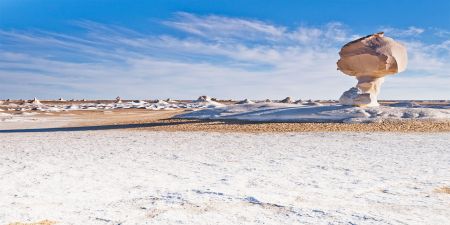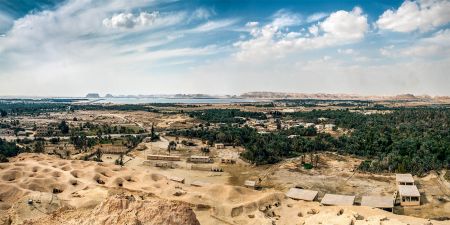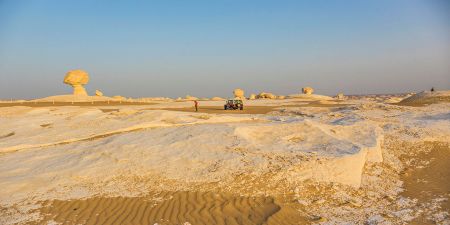-
Home
- Egypt
- Wiki Travel
- Egypt Oases
- Temple of Dush
Temple of Dush
Temple of Dush is located at the Kharga Oasis, it is entirely surrounded by a mud-brick fortress. The temple was built during the rule of Domitian and Trajan (1st century) and decorated during the rule of Hadrian

Location :
The temple is located at the Kharga Oasis , it is entirely surrounded by a mud-brick fortress
Who built it:
The temple was built during the rule of Domitian and Trajan (1st century) and decorated during the rule of Hadrian, though apparently the site was occupied from the Ptolemaic period.
Why was it built:
The temple was built as a dedication to goddess Isis and god Serapis.
Explanation :
Dush was a religious, military and civilian complex, that primarily developed as the result of the slave trade, and was a staging point for caravans that either headed to Assiut or Esna.
Entering the temple through any one of several gates, there is a barrel-vaulted sanctuary which is made up of two connecting rooms and has a vaulted ceiling. On either side of the sanctuary are chapels.. The temple is open from 7:00 a.m. to 5:00 p.m. and has no admission charge.
Though there are actually few decorations, the temple is believed to have been covered with gold. However, all three Roman Emperors are depicted in scenes carved on the temple walls.
A monumental stone gateway fronts the temple and contains a dedicatory inscription by Trajan dated to 116 AD. To the north is a large forecourt containing five columns with a pylon at its northern end. The main part of the temple measures about 7.5 by 15.5 meters and contains a pillared hall with four slender columns, a staircase to the roof, an offering table in an outer chamber and an inner sanctuary with a vaulted roof. Two long side chambers also had barrel-vaulted roofs. A taller pronaos was later added to the front of the main building.
Many artefacts have been discovered in the temple's courtyards, including pottery, coins and Straca including a large collection of demotic ostraca dated from the Persian Period. Some were also written in Greek and appear to date from the early 4th to 5th centuries. They specifically consist largely of receipts and payments for supplies for the Roman army but also include names of individual soldiers and civilians.
Customize Your Dream Vacation!
Get in touch with our local experts for an unforgettable journey.
Plan Your TripEgypt Travel Guide
Egypt Oases
- Gara Cave
- Al-Deer
- Badr's Museum
- Bagawat
- Black desert
- Cleopatra bath
- Great Sand Sea
- Mizawaka
- Monastery of Anba Bishoy
- Mountain of the Dead in Siwa | Gebel al-Mawta
- Qarun Lake
- Roman Temple in Deir El-hagar
- Temple of Alexander the Great
- Temple of Amon
- Temple of Dush
- Temple of Hibis
- Temple of Nadura
- The Crystal Mountain | Bahariya Crystal Mountain
- The Monastery of Abu Makar (Makarios) | Egypt
- The Monastery of Baramus | Egypt
- The Monastery of El Suryan | Cairo Attractions
- Therapy in Siwa Oasis
- Valley of Al-Haiz
- Valley of the Golden Mummies
- Wadi Al- Rayan, Protected Area | Fayoum, Egypt
- Wadi El-Natroun | The Monasteries of Wadi El Natrun
- The White Desert in Egypt
- Fayoum Bird-watching Guide
Ports of Call
Red Sea and Sinai
Famous Mosques in Egypt
Transportation guide in Egypt
Egypt Tourist Attractions
Egypt Pyramids
- Djedefre Pyramid | Abu Rawash
- Abu Sir | Egyptian Necropolis & Pyramids
- King Snefru's Pyramid | Egypt
- Old Kingdom Pyramids | Ancient Egypt
- Pyramid Complex of Pepi I
- Pyramid of Amenemhat III
- Pyramid of lahun | Egypt Pyramids
- Pyramid of Meidum
- Pyramid of Neferhetepes | Egypt Pyramids
- Pyramid of Netjerkhet | Egypt Pyramids
- Pyramid of Neferefre
- Pyramid of Sahure | Egypt Pyramids
- Pyramid of Sekhemkhet
- Pyramid of Sesostris III
- Pyramid of Teti | Egypt Pyramids
- Pyramid of Userkaf | Egypt Pyramids
History of Egypt
- The False Doors | Ancient Egypt Secrets
- Egyptian Canopic Jars: What are Canopic Jars?
- Holy Family in Egypt
- king khufu (Cheops) | Kings of Ancient Egypt
- Khafre Statue | King Khafre Pyramid
- Who built the first pyramid in Egypt
- Menkaure (Mykerinos) Pyramid | King Menkaure
- Ramesses IV | Ramses iv Tomb
- Ramses IX Tomb
- The Divine Triad of Dendera
Aswan Attractions
Luxor Attractions
Alexandria Attractions
Cairo Attractions
- Famous Bab al Futuh
- Al-Tannoura Egyptian Heritage Dance Troupe
- Saints Sergius and Bacchus Church
- Abusir Pyramids & The City of The Dead Egypt
- Agricultural Museum Egypt, Cairo
- AL Fustat Historical City
- Bab El Nasr Cairo City Gate
- Beit Al Sennari or Al Sennari House in Cairo
- The Cairo Tower
- Birqash Camel Market in Cairo
- Coptic Cathedral in Abbasiya
- Egyptian Museum Guide
- El Mosky Cairo | Bazaars & Souks
- King Tutankhamun Treasures: Inside the World of Egypt’s Most Famous Pharaoh
- The Mosque of Muhammad Ali Pasha in Cairo
- Royal Mummy Room in The Egyptian Museum
- The Pharaonic Village
- The Great Sphinx of Giza
- Babylon Fortress Facts
- Solar Boat Museum
- Valley Temple of Khafre
- St Mary Egypt Orthodox Church
- Verdi Aida Opera Show in Giza Pyramids Egypt
See two different sides of Egypt on this 6-day tour. In Cairo visit the Pyramids and the GEM. Travel to Bahariya Oasis to learn about Bedouin culture and camp in the desert. Enjoy the beautiful White Desert Safari in Egypt.
Take this 5-day adventure into the desert to see a unique part of Egypt. Travel to the isolated Siwa Oasis to see Shali, the ancient town, and the Temple of the Oracle, where Alexander the Great was named ruler of Egypt. Take a 4x4 into the desert to see the Great Sand Sea and the beauty of the desert.
Enjoy 3-day tour to the amazing Bahariya Oases With camping in the White Desert, exploring the beauty of this unique area in the Western Desert and touring its landmarks like the Alexander Temple, Crystal Mountain and many more.
Plan Your Trip!
You Might Also Like

It is situated to the southernmost of the monastery group of Wadi al-Natrun. It can be seen west from Cairo - Alexandria desert highway.. Know More!
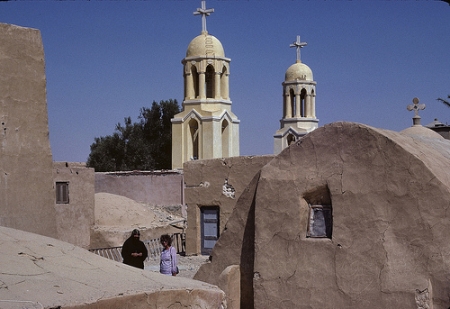
It was founded by St. Macarius in 340 AD. It was built in the place where St. Macarius the Great settled, in 340, when he devoted ... Know More!

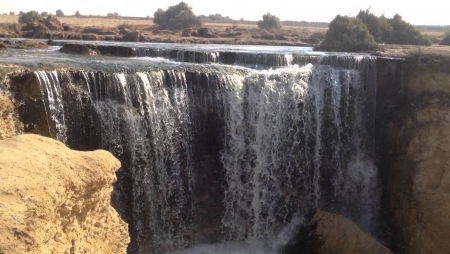
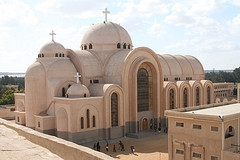

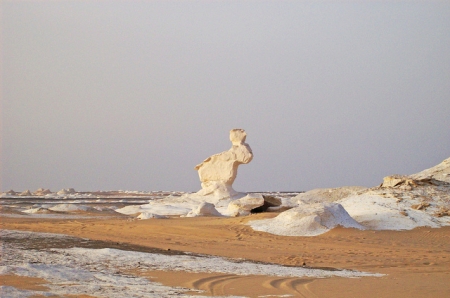
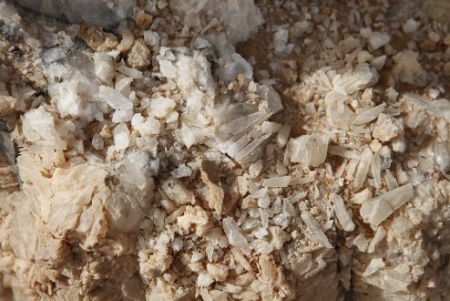
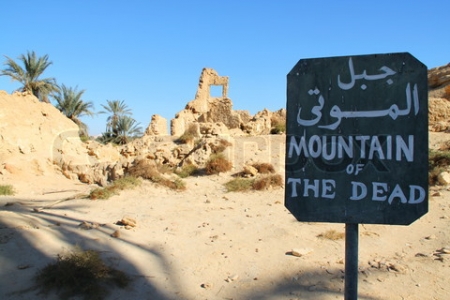
It is situated in Siwa oasis.The mountain contains number of tombs. The tombs.... Know More!

The Great Sand Sea of the eastern desert; an unbroken mass of dunes the size of New Mexico which smothers the barren frontiers of Libya and Egypt and is home to not one living soul.
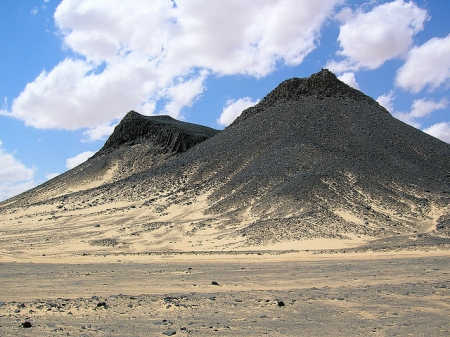
The Western Desert of Egypt is far more than sand dunes. Here you will find five large oasis ( plus one man-made ), the black desert as the white, huge mountain plateaus (as Gilf Kebir which alone is nearly the size)
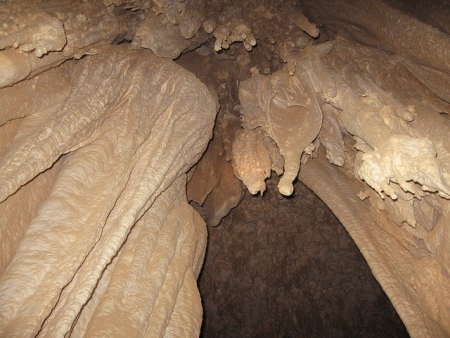
Djara or (Gara) is a cave of magical dimensions, as it is one of the very few well decorated caves in Egypt. Learn more.
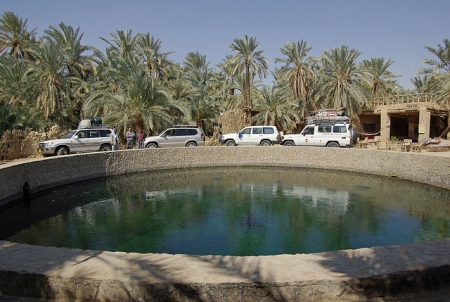
Cleopatra Bath is a stone pool fed by natural spring water, and probably the best known pool in the area. Apparently, the pool had was not vary inviting from reports in recent years, but there have been efforts made to improve it.
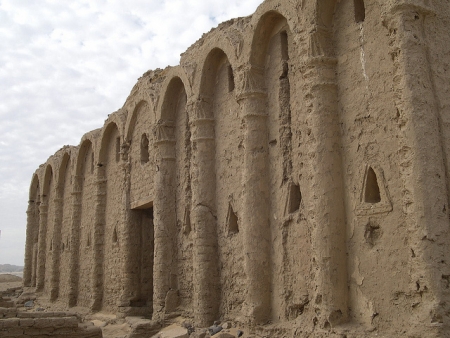
The cemetery of Al-Bagawat was used as a burial place contains 263 tombs in the shape of domed chambers dates back to the 4th through 6th centuries.
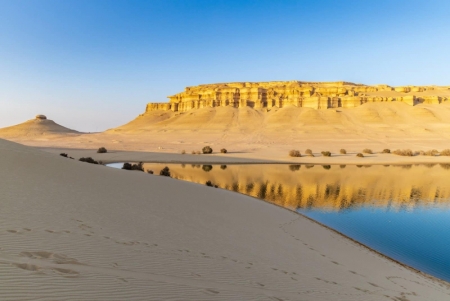
Qarun lake is considered the oldest natural lakes in the world, the third largest lake in Egypt and the rest of lake Old Maurice. Know more!
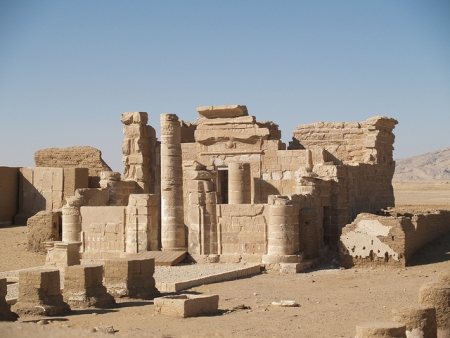
Roman Temple in Deir El-hagar is among the smallest Temples in Egypt . It is in a good condition, a result of the structure being covered by sand for centuries.
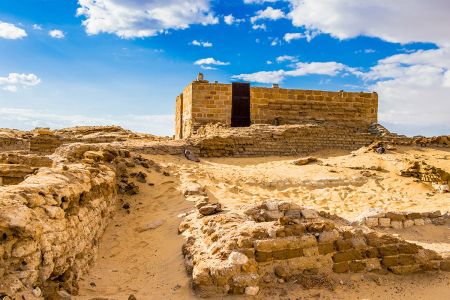
Temple of Alexander the Great was built to commemorate Alexander's passing on his way to Siwa . One of the temple's walls has a scene shows Alexander the great offering gifts to god Amon .

The impact of this site in ancient times appears slightly strange, and fascinating at the same time, to modern visitors. The actual temple is so small, but the entire setting is like one of a fantasy novel.

Valley of the Golden Mummies located in Bahariya Oasis, about 380 km west of the pyramids, It was built during the Greco - Roman period exhibits a variety of styles and a range of social status.
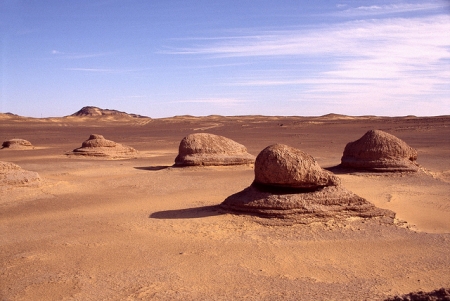
Valley of Al-Haiz, located near the western edge of Bahariya depression beside the black desert in Bahariya Oasis, this valley was much greener and arable so it was one of the most important places in Egypt.
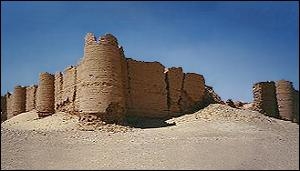
The Roman Deir is a Fortress built in about (20km square) north to Kharga Oasis. It has a huge enclosure and twelve round towers. Both Turkish and British troops occupied the fortress.

Badr Museum is a local artist and entrepreneur who has fared rather well in recent years. His original small but interesting museum has been abandoned for a wonderful mud brick structure that the built himself.
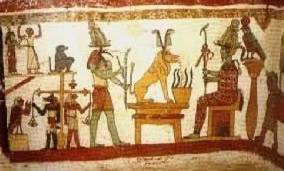
Mizawaka Tombs date back to the Pharaonic period are the rock hewn tombs of Pelusis and Petosiris. While the tombs are decorated in traditional Egyptian fashion, Petosiris is dressed as a Greek.
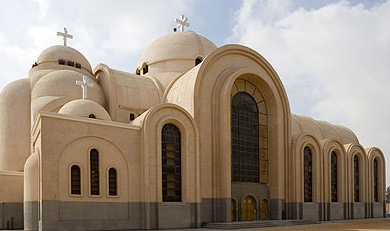
Anba Bishoy Monastery consists of five churches but the main church is called St. Bishoy which have sanctuaries.
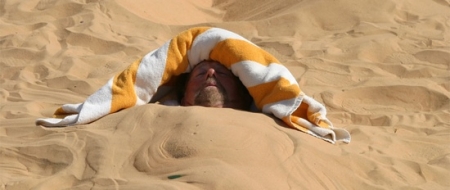
Therapy in Siwa Oasis: Siwa Oasis has got many springs, they are being used as environmental treatment place, and the water is capable of curing some diseases.

Temple of Dush is located at the Kharga Oasis, it is entirely surrounded by a mud-brick fortress. The temple was built during the rule of Domitian and Trajan (1st century) and decorated during the rule of Hadrian
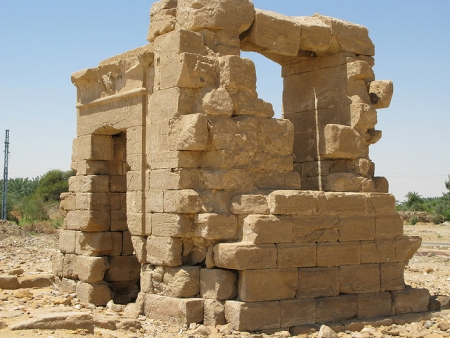
Nadura Temple is situated in the northeast of the Kharga Oasis, the new valley. The temple was built during the reign of the Roman Emperor Antoninus Pius or Hadrian in 138 AD
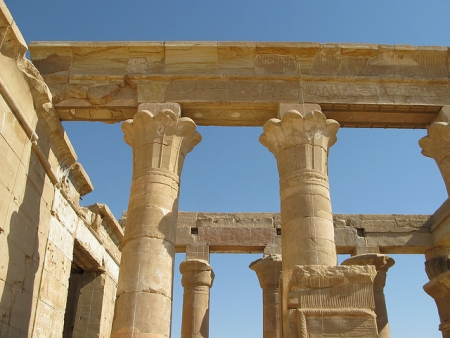
Hibis Temple is located about 2 Km from the Kharga Oasis. It was built during the Persian period. The temple was built as a dedication to the Theban Triad.

